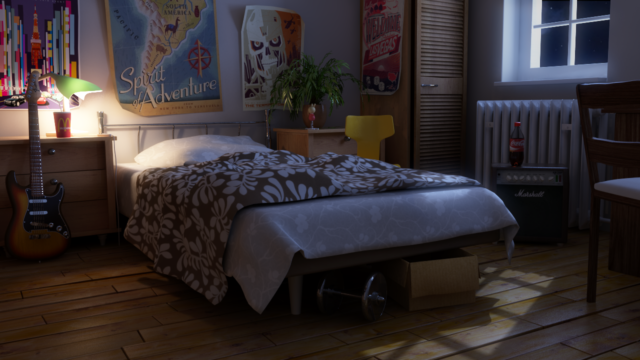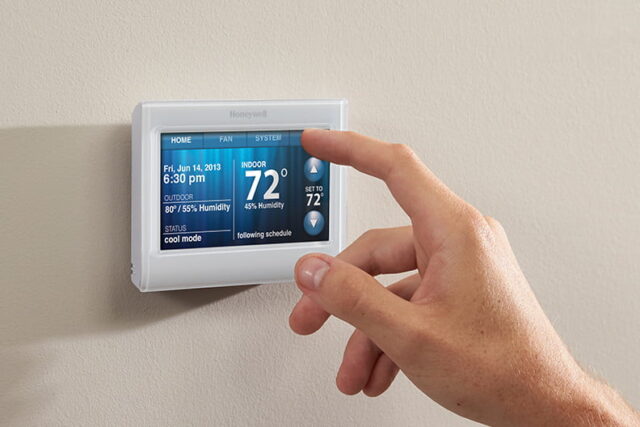
Not getting the sleep you need? There are ways to fix it. Sleep is crucial to our physical and mental health. So, if you’re having problems, check out the ten ways to get a better night’s rest.
10Sleep schedule

Falling asleep and waking up at the same time—with quality nap in between—is much simpler if you adhere to a routine.
Make a nap log and monitor it every day. Try to go to bed and rise at the same time, even on weekends, to reinforce your body’s sleep-wake cycle to optimum times. Can’t sleep? Give it 20 minutes, then leave your bedroom and do something relaxing before heading back to bed once you’ve become more tired.
9Diet

Another way you can get a better night’s nap is by adjusting your diet. Caffeine is a stimulant that can cause increased alertness, nervousness, and even insomnia. So, avoid consuming caffeinated drinks and food at least four hours before bedtime.
Similarly, make sure you don’t eat large meals within two hours of going to bed. Make sure your diet is balanced and packed with protein, carbohydrates, and sleep-assisting nutrients like vitamins B and D.
Processed food and sugar can cause your blood sugar levels to rise and fall rapidly, which can continue into the evening and disrupt your rest.
8Bed

The first step to a decent night’s siesta is, unsurprisingly, unwinding on the perfect bed. Trying to rest on an old, low-quality mattress that isn’t ergonomically suited to your body shape and position is ambiguous.
So, if you want to get a better night’s rest, find the most comfortable mattress. According to Savvy Sleeper, The ideal mattress differs from person to person, as we all siesta in different positions.
For example, people who rest on their backs are best suited to a medium-firm mattress with a sturdy mid-section that stops the body from sinking.
On the other hand, side sleepers will prefer softer mattresses that contour to the body’s curves. Determine what type are you and research the best option.
7Tech Ban

Americans spend more than 11 hours a day interacting with media, which includes phones, tablets, televisions, and laptops. Why is this a problem? Using electronic devices in the evening can prevent us from falling asleep.
This issue is due to the blue light from these devices that block our bodies’ creation of melatonin, which controls our sleep-wake cycle.
To aid siesta, ban all gadgets from the bedroom and reduce your use of technology an hour before bed. That way, your brain and body will be more ready to fall asleep.
6Natural light

Light affects our sleep-wake cycle, so getting enough natural light every day is another excellent way to get better rest.
The hypothalamus in our brain regulates many of our body’s functions, such as nap, energy, and appetite. Sunlight detected by our retina cells sends messages to our brain that keeps us in an approximate 24-hour pattern.
These light cues activate many chemical events in our body, including when it’s time to rest. For example, as light reduces in the evening, the hormone melatonin starts to elevate, and body temperature drops—both of which help us to become less alert and more likely to nap.
If we have had enough daylight, our natural levels of vitamin D also increase, which better aids deep siesta.
5Exercise

Physical activity is key to a good night’s rest too. If we have moved around enough during the day, our bodies and minds will feel more fatigued, which will help us drift off.
Consider joining a gym or take up a sport you used to love, like swimming or running. Exercise can help tire you out, so you find decent rest.
4Routine

Circadian rhythm, the body’s biological clock, controls our sleep-wake cycles, and a disruption of this can significantly affect how well we nap.
Ideally, we should fall asleep in the late evening and rise early in the morning. However, if you regularly change when you go to bed and wake up or substitute a full night’s siesta for shorter daytime naps, you will harm the optimum circadian rhythm. This disruption will make getting a better night’s rest even more difficult.
Create a routine that works for you. This routine might include a relaxing bath just before heading to bed or listening to calming music when lying down.
Make it your mission to go to bed and get up at the same time every day, including weekends, to help get your body in the ideal circadian rhythm. You will soon notice that drifting off to siesta becomes more comfortable if you adhere to a special schedule.
3Techniques
Why not also carry out a simple breathing technique before bed to get your body and mind ready for a long, decent night’s rest?
Concentrating on your breathing, directing the air through your nose, for a short time, helps to relax the body. Repeating long, five-second breaths will destress and calm your body’s pace, readying it for bed.
2Temperature

Room temperature can also impact how well we rest, so it’s worth checking your bedroom if you want a disruption-free rest.
Reportedly, the ideal temperature is between 60 and 67 degrees Fahrenheit. See if you can use fans, heaters, extra bedclothes, or a thermostat setting to help keep your bedroom at the optimum temperature throughout the night.
1See A Doctor

There are a variety of disorders that might affect how easily you get a decent night’s rest. These include:
- Sleep apnea: when someone stops breathing momentarily.
- Insomnia: difficulty falling asleep.
- Circadian rhythm disorders: desynchronization between light-dark cycles and sleep-wake rhythms.
If you think you may have a sleep problem, then it’s worth checking with a medical professional to help fix it so that you can start sleeping better for longer.
Hopefully, these tips above will help you get the full night of undisturbed rest you need to feel ready and alert the next day.







